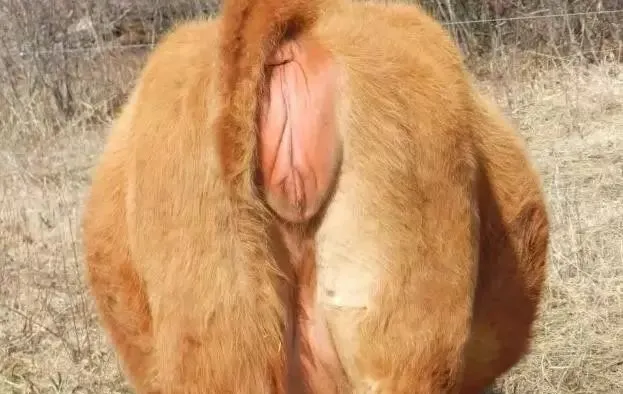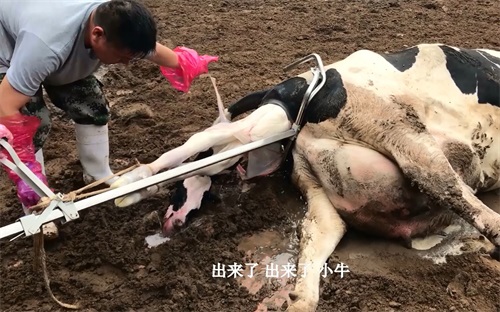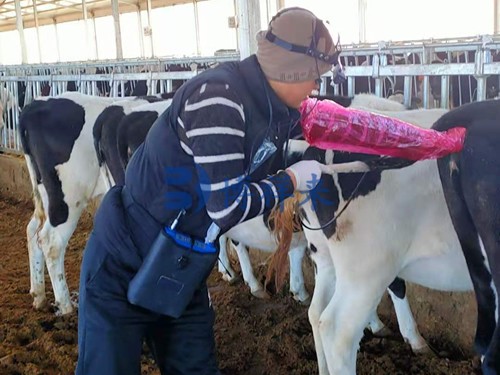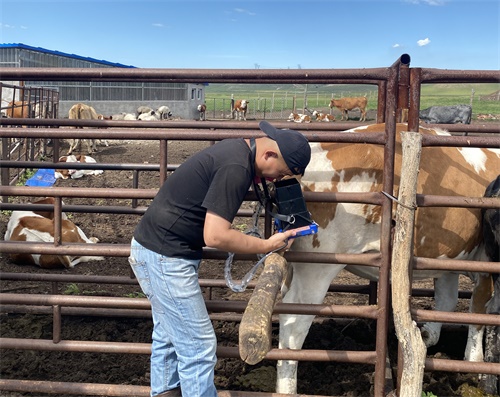Equine veterinary medicine has come a long way in the past few decades, and one of the most transformative advancements is the widespread use of ultrasound. Today, ultrasound technology is not just a diagnostic tool—it has become a cornerstone of routine horse healthcare, supporting everything from lameness evaluation to reproductive monitoring. As imaging equipment becomes more specialized for large animals, veterinarians are better equipped than ever to deliver precise, timely, and minimally invasive care.
The Basics of Equine Ultrasound
Ultrasound uses high-frequency sound waves to generate images of soft tissue structures inside the horse’s body. Unlike radiography, which is better for visualizing bones, ultrasound is ideal for evaluating muscles, tendons, ligaments, organs, and reproductive structures. This non-invasive technology can be used stall-side with no need for sedation, making it a go-to choice for on-site diagnosis and monitoring.
Key Applications in Equine Practice
1、Tendon and Ligament Injuries
Ultrasound has revolutionized the diagnosis and treatment of soft tissue injuries in sport horses. Tendons like the superficial digital flexor and suspensory ligament are prone to overuse injuries, particularly in racehorses and eventers. With ultrasound, veterinarians can visualize the extent of fiber disruption, monitor healing, and guide controlled rehabilitation programs that improve outcomes and reduce re-injury rates.
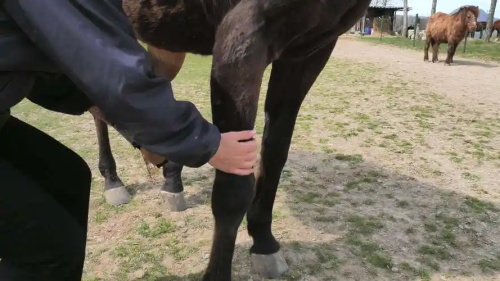
2、Reproductive Monitoring
Ultrasound is indispensable in equine reproduction. Breeding soundness exams, follicular tracking, pregnancy diagnosis, and monitoring fetal development all rely on accurate imaging. Mares are scanned regularly during the breeding season to determine optimal insemination timing. Fetal heartbeat and viability can be monitored throughout gestation, helping breeders manage pregnancies with precision.
3、Musculoskeletal Imaging
In addition to tendons, ultrasound can assess joint capsules, muscle tears, fluid accumulation, and even bone surfaces. For example, shoulder and stifle injuries—traditionally hard to assess—can be better understood using ultrasound, especially when combined with other diagnostic tools. It allows for early detection of inflammation, guiding prompt treatment and potentially avoiding long-term damage.
4、Thoracic and Abdominal Examinations
Ultrasound can detect pleural effusion, pneumonia, colic-related distension, or liver abnormalities—conditions that might otherwise go unnoticed until they become critical. A portable machine can provide real-time diagnostics in the field, which is crucial for emergencies or in remote locations where access to large hospitals is limited.
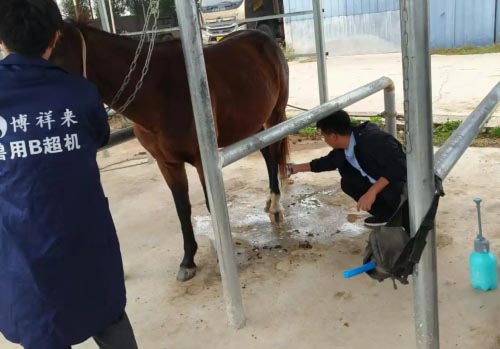
5、Guidance for Interventional Procedures
Ultrasound is also used to guide procedures such as joint injections, aspiration of fluid-filled swellings, and even biopsies. The ability to see needle placement in real-time improves safety and accuracy, especially when dealing with delicate anatomical structures.
Benefits of Ultrasound in Equine Medicine
Non-Invasive: No incisions, sedation, or anesthesia is required in most cases.
Immediate Results: Real-time imaging supports faster clinical decisions.
Safe and Repeatable: No ionizing radiation makes it ideal for repeated use.
Field-Ready: Modern ultrasound units are compact and robust enough for barn or pasture use.
Cost-Effective: Relative to CT or MRI, ultrasound is affordable and widely accessible.
Challenges and Considerations
While ultrasound is an excellent tool, it does require skill to interpret. Operator training and experience are critical to obtaining accurate, high-quality images. Image quality can also vary based on the horse’s size, movement, and hair coat. That’s why large animal-specific equipment, designed to handle these challenges, is becoming increasingly important. For example, some manufacturers like BXL now specialize in ultrasound devices made specifically for equine and livestock use, offering better probes, battery life, and durability in field conditions.
Future Outlook
As technology advances, we can expect even more specialized probes, higher image resolution, and software capable of AI-driven image analysis. Combined with telemedicine, veterinarians can soon consult with specialists across the globe in real-time, improving access to expert care no matter where a horse is located.
Conclusion
Ultrasound has firmly established itself as an essential part of equine veterinary medicine. From detecting injuries and guiding treatment to managing breeding and monitoring internal health, it provides a level of insight that was once impossible. With equipment increasingly tailored for horses and large animals, the future of ultrasound in equine care is not just promising—it’s galloping forward.

